
Selected pages of 'Nuclear Futures' Comic Book
Three-colour risograph print, orange, aqua and teal on colour paper. Pencil line with digital colour.
2022
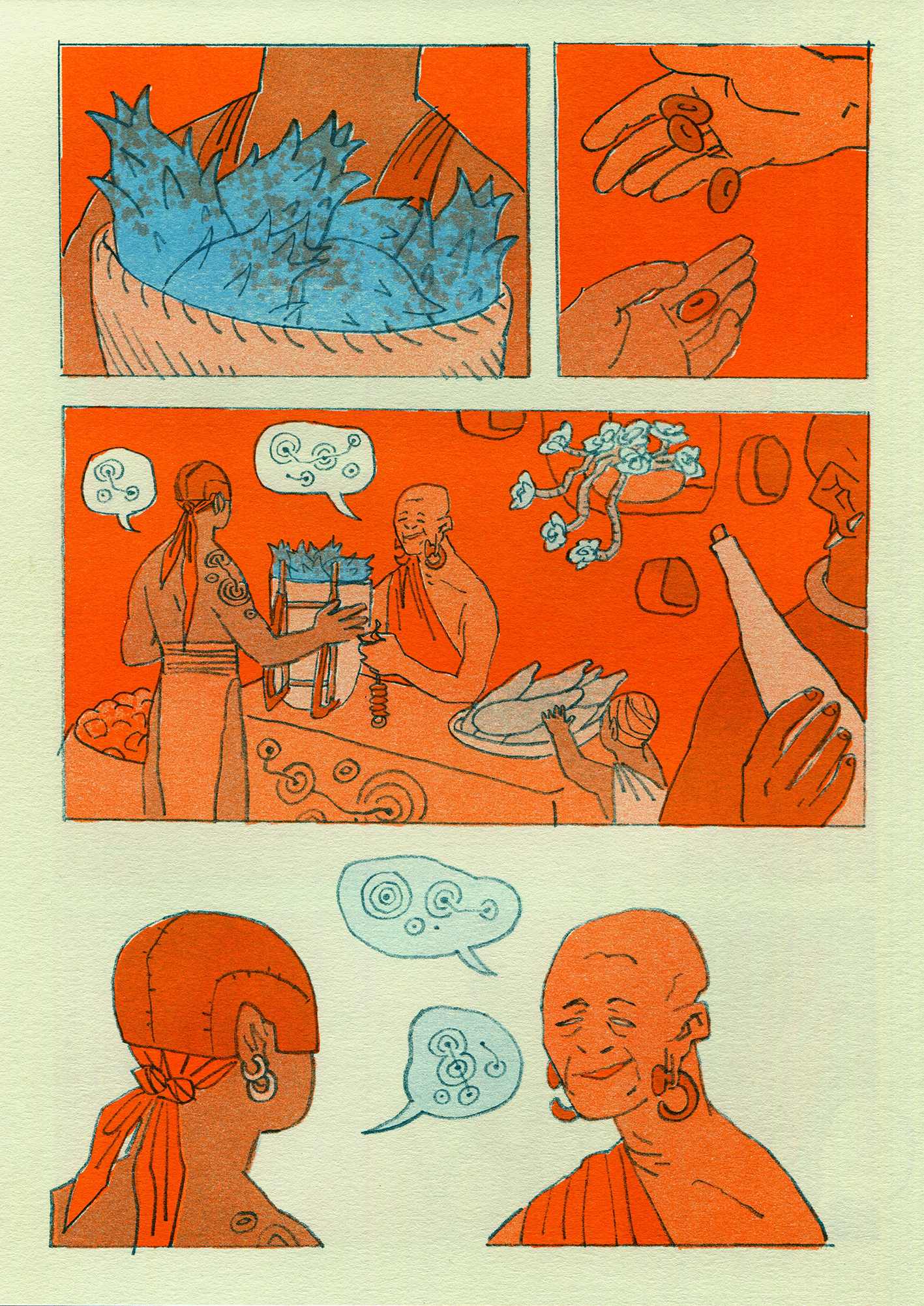
page 1

page 8
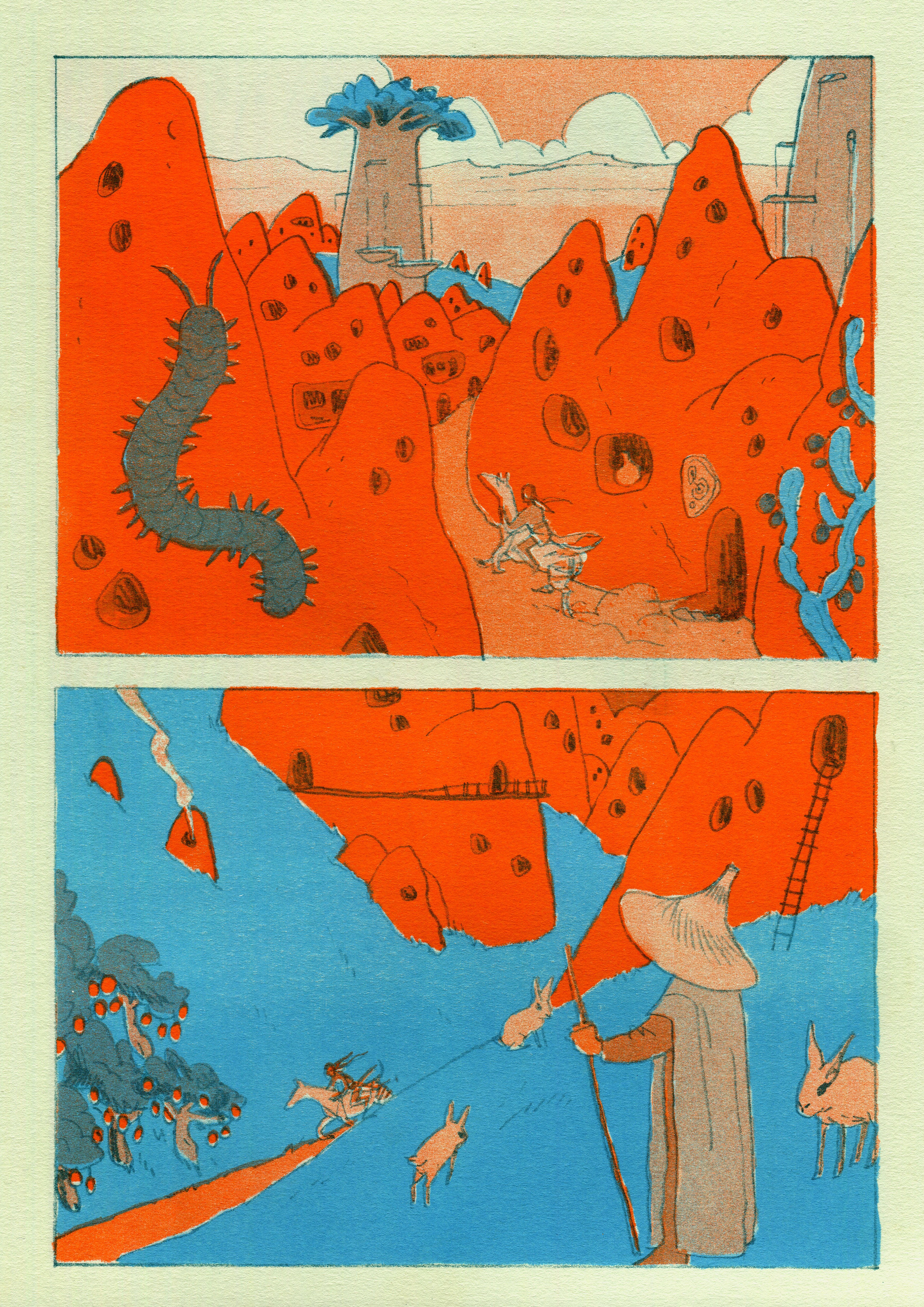
page 6
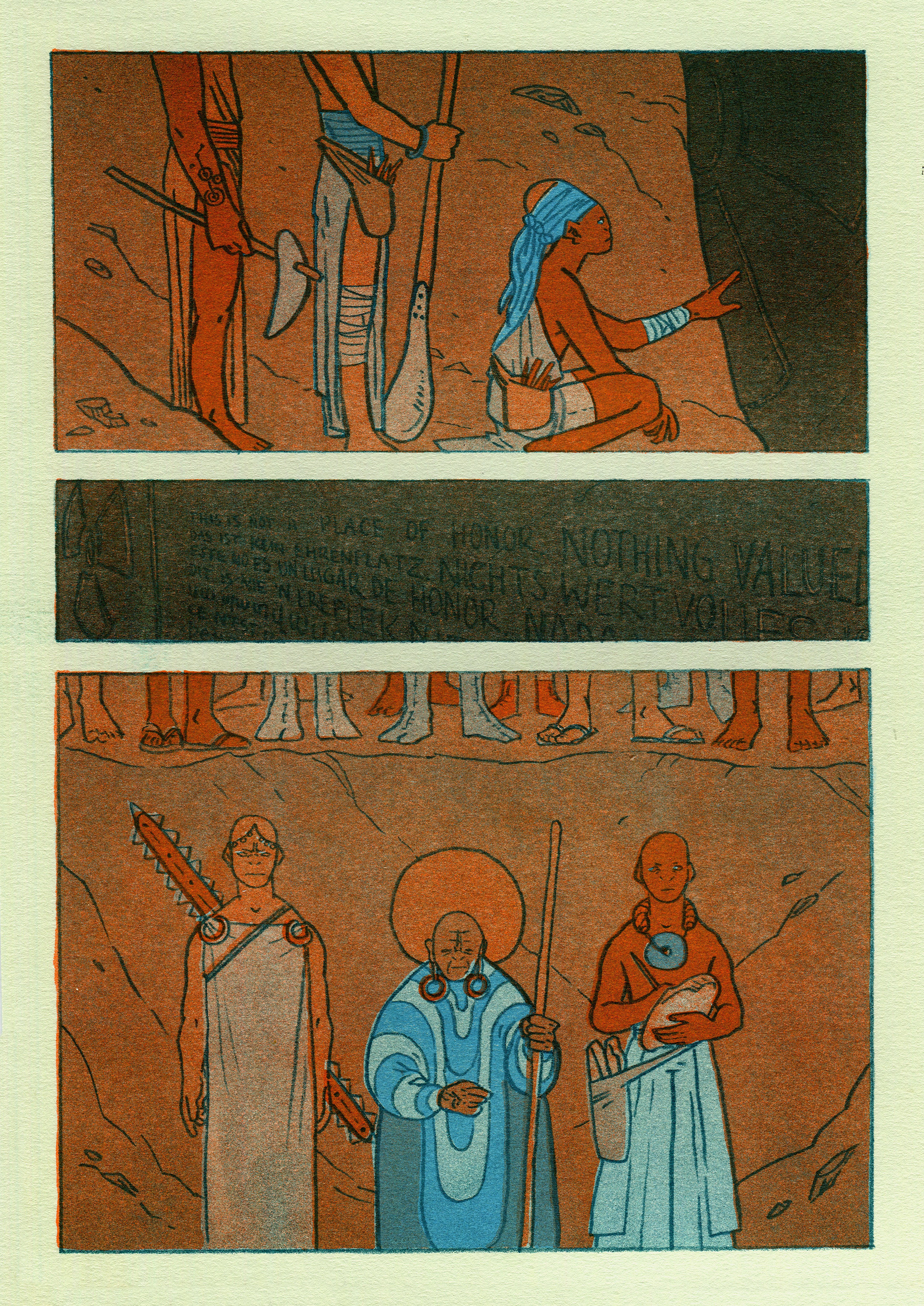
page 18
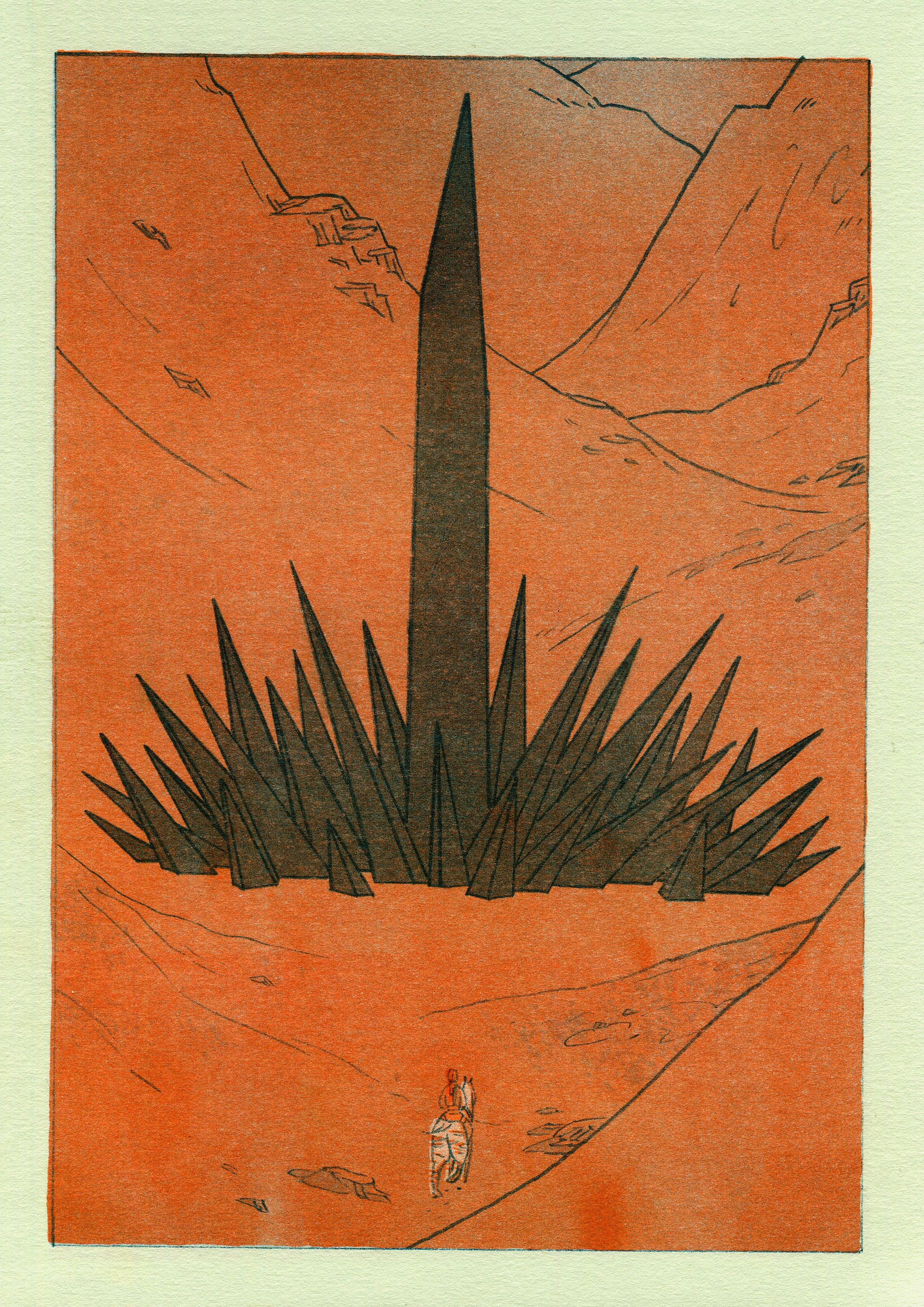
page 14
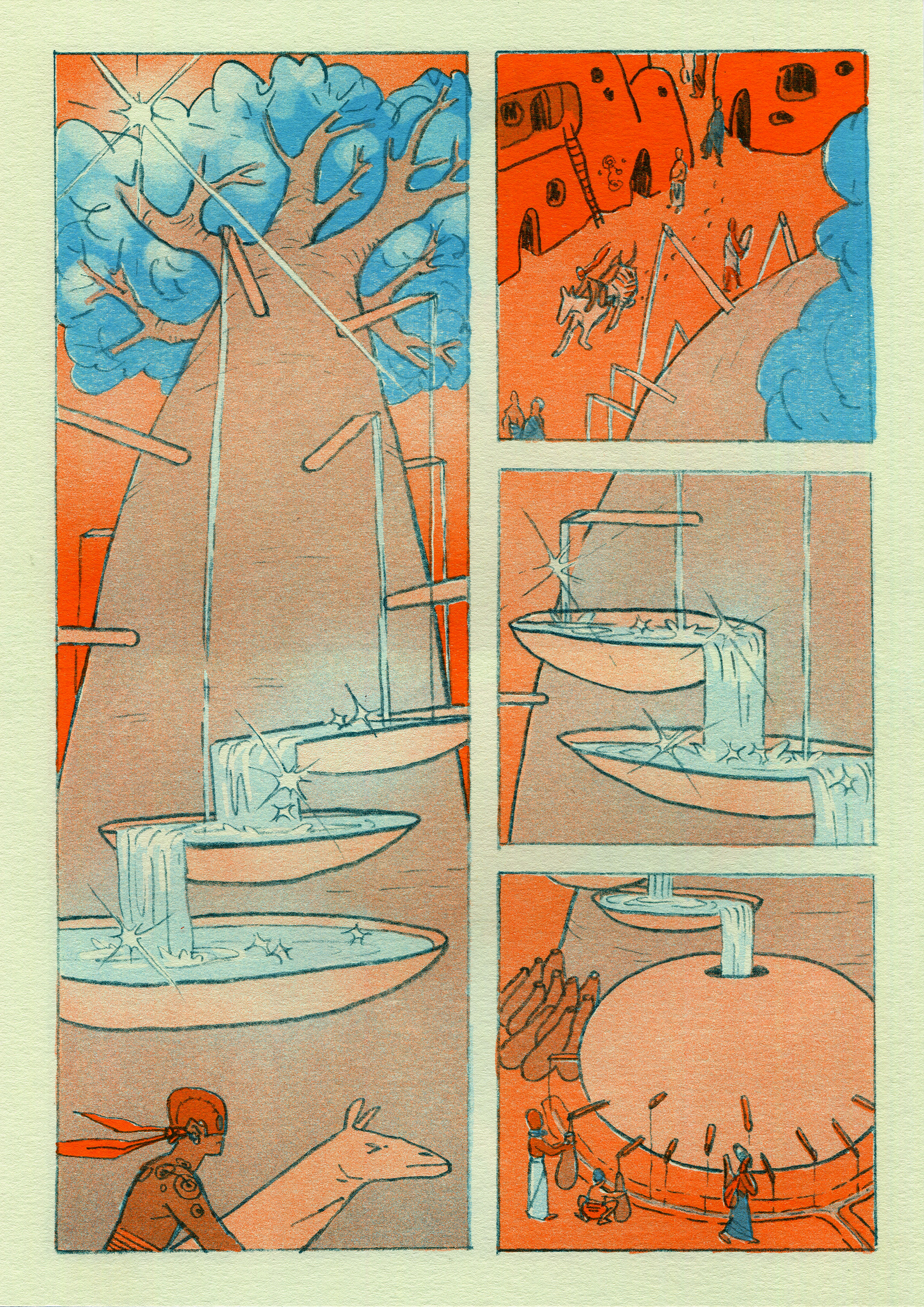
page 5
This risograph printed comic follows the story of a human society discovering the hostile architecture warning system of a nuclear waste storage site, thousands of years after our current civilisations were wiped out by a man-made apocalypse that reduced most of the world to barren deserts and returned humanity to the Iron Age.
Since the 1980s scientists and linguists have been developing ways to warn future civilisations about nuclear waste storage sites, as the buried waste will remain harmful for up to 10,000 years. As our current language will be lost by this time, systems of pictograms, earthworks and 'hostile architecture' were proposed to dissuade any use of the site.
This piece won the Elephant Award 2022 and gold in the Creative Conscience Awards 2022.
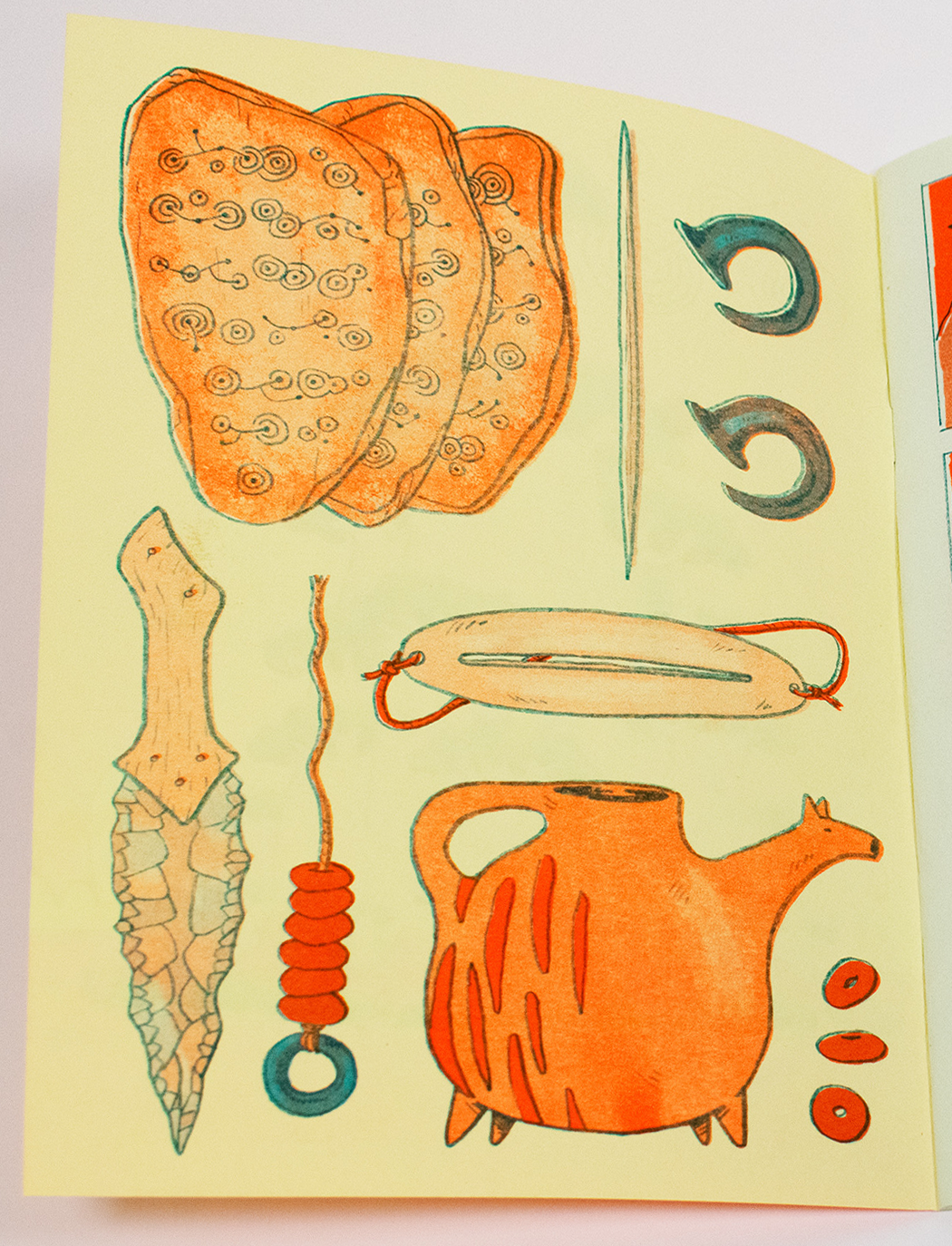
Endpapers
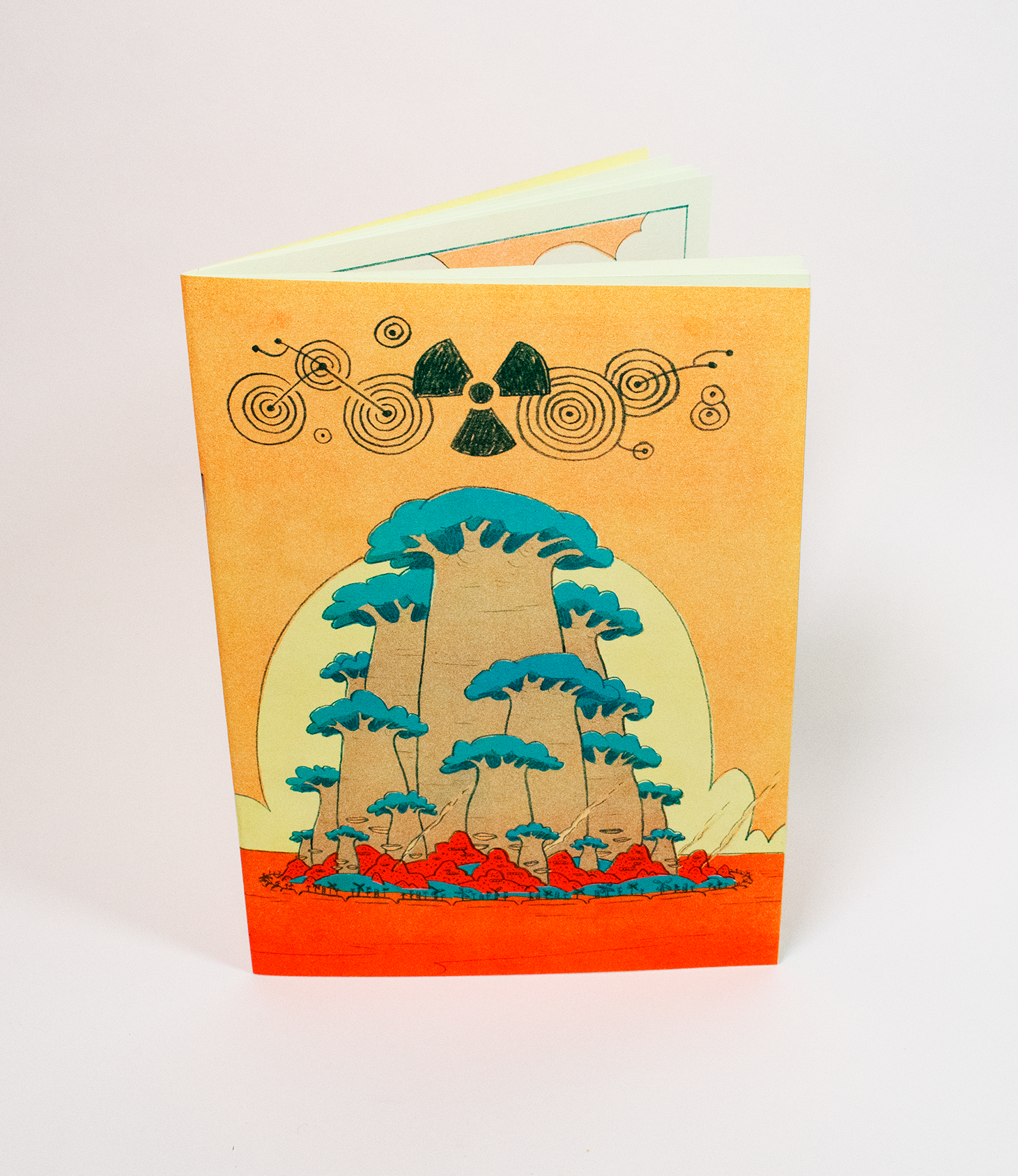
Cover
Below are sketches planning the design of characters, objects and landscapes. The humans of this fictional future have evolved features to handle the harsh environment created by climate change, such as thick skin and nostrils that can close to protect against sand storms. I also chose to present these characters with no physical signifiers of sex or gender.



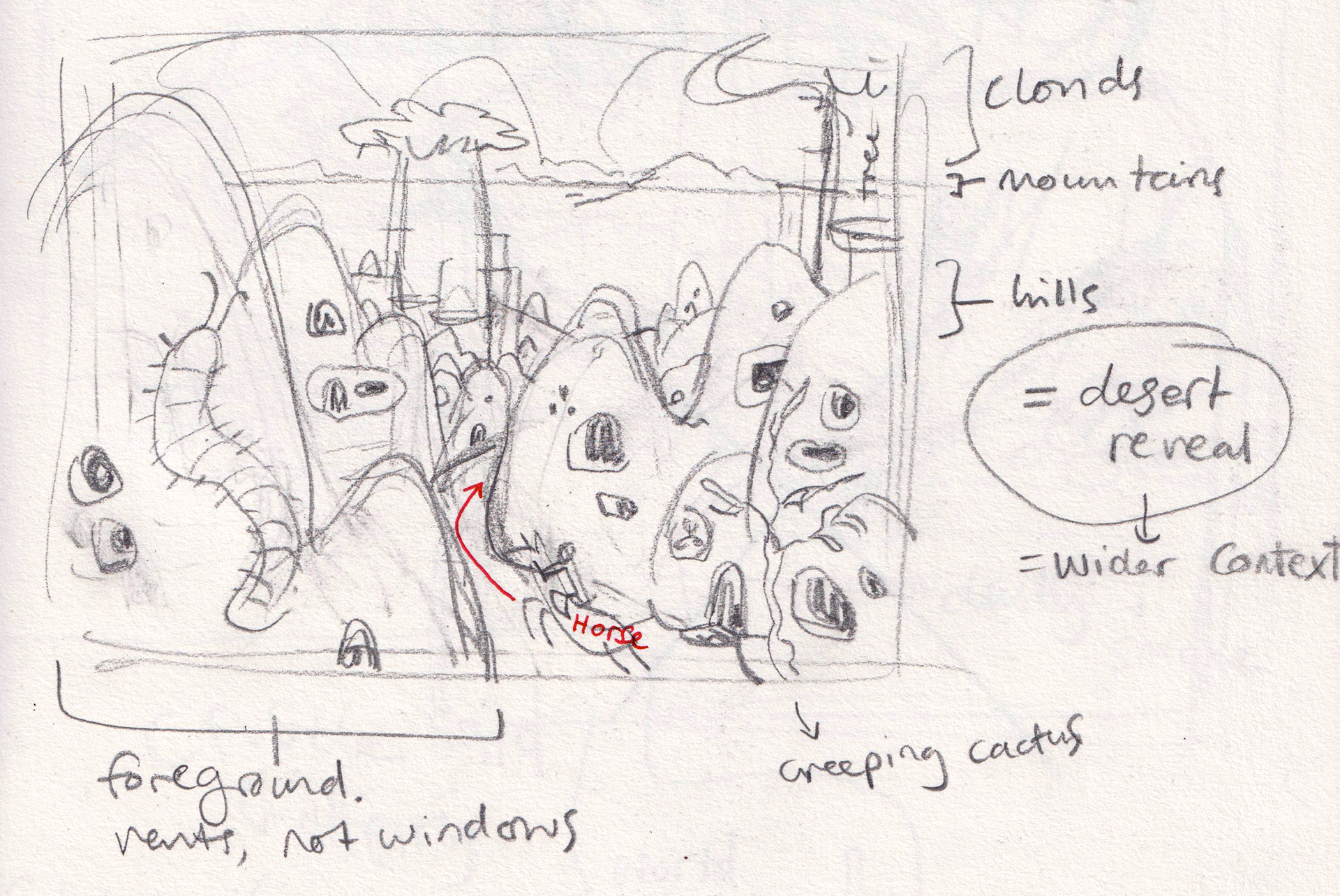
Below are two of the pages before being digitally coloured and risograph printed. The line art was drawn in pencil.

Page 4 Line Art

